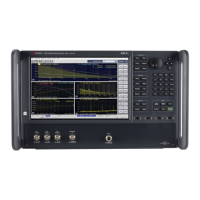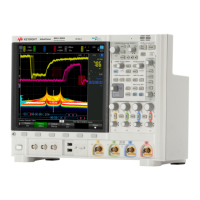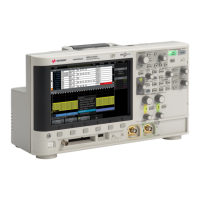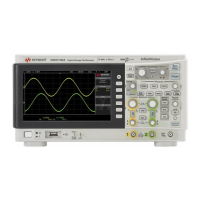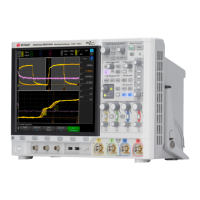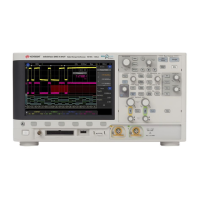Keysight EXG and MXG X-Series Signal Generators User’s Guide 319
Using Multitone and Two-Tone Waveforms for N5172B/82B with Option 430 and 653/655/656/657
Using Two–Tone Softkeys
7. Set the attenuation to 4 dB, so you’re not overdriving the input mixer on the spectrum
analyzer.
You should now see a two–tone waveform with a 6 GHz center carrier frequency that is similar to
the one shown in Figure 10-3 on page 319. You will also see IMD products at 10 MHz intervals
above and below the generated tones, and a carrier feedthrough spike at the center frequency with
carrier feedthrough distortion products at 10 MHz intervals above and below the center carrier
frequency.
Figure 10-3
Minimizing Carrier Feedthrough
This procedure describes how to minimize carrier feedthrough and measure the difference in power
between the tones and their intermodulation distortion products. Before beginning this procedure,
it is important that a recent I/Q calibration has been performed on the instrument. The procedure
for performing an I/Q calibration (refer to “I/Q Calibration” on page 215).
This procedure builds upon the previous procedure.
1. On the spectrum analyzer, set the resolution bandwidth for a sweep rate of about
100 to 200 ms. This will allow you to dynamically view the carrier feedthrough spike as you
make adjustments.
2. On the signal generator, press I/Q > I/Q Adjustments > I/Q Adjustments Off On to On.
3. Press Internal Baseband Adjustments > I Offset and turn the rotary knob while observing the
carrier feedthrough with the spectrum analyzer. Changing the I offset in the proper direction
will reduce the feedthrough level. Adjust the level as low as possible.
4. Press Q Offset and turn the rotary knob to further reduce the carrier feedthrough level.
Intermodulation
Distortion
Two–Tone
Channels
Carrier Feedthrough
Distortion
Carrier
Feedthrough
For details on each key, use key help as described on page56.
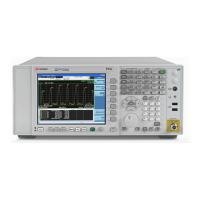
